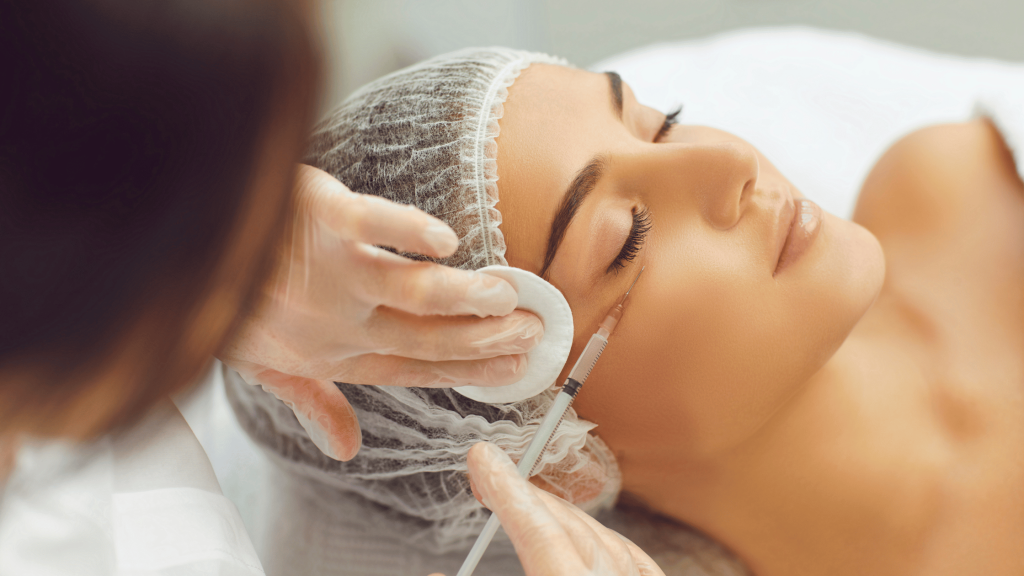
For those in the UK tirelessly seeking the secret to ageless skin and finding themselves inundated with information about Botox and fillers, your quest ends here. This detailed comparison aims to shed light on these popular cosmetic treatments, enabling you to answer that all-important question: Botox or fillers – which is the superior choice for your skin?
The Treatments
Botox, a substance derived from the bacterium Clostridium botulinum, is widely known for its ability to reduce wrinkles. By temporarily immobilising facial muscles, Botox works to smooth fine lines and wrinkles, providing a rejuvenated, youthful appearance.
Dermal fillers have grown in popularity due to their volumising effect. Comprising hyaluronic acid, fillers work to restore lost volume and smooth out wrinkles, revitalising your skin.
Comparison: Areas of Focus and Efficacy
Botox is particularly effective in addressing dynamic wrinkles – lines that become more prominent with facial expressions such as frowning or smiling. It is especially beneficial for treating crow’s feet, frown lines, and forehead lines. Botox effects generally last between 3-6 months, necessitating regular treatments to preserve the youthful look.
Conversely, fillers are adept at treating static wrinkles – lines that persist even when your face is at rest. They are perfect for enhancing your cheeks, filling in nasolabial folds, and adding volume to your lips. Fillers typically last from 6-18 months, offering a more enduring solution than Botox.
Comparison: Side Effects and Risks
Both Botox and fillers carry potential side effects, typically mild and temporary. Botox may cause minor bruising, swelling, or redness at the injection site, with a slight risk of temporary muscle weakness or drooping if the product spreads to adjacent muscles.
While fillers are generally safe, they may cause mild side effects such as redness, swelling, and bruising. In rare instances, more serious complications like allergic reactions, infection, or lumps under the skin may occur.

Comparison: Cost
In the UK, both Botox and fillers represent significant investments. The cost of Botox varies based on the number of units required, with an average treatment costing around £200-£350.
Fillers can cost between £250-£500 per syringe, with the total cost depending on the number of syringes required to achieve the desired results.
Final Verdict
The decision between Botox and fillers ultimately hinges on your individual needs and goals. Both treatments offer distinct advantages, and the best choice will depend on the areas you want to address, the results you desire, and your budget.
If dynamic wrinkles are your primary concern and you are comfortable with frequent treatments, Botox may be your ideal option. Conversely, if you aim to address static wrinkles, restore facial volume, and prefer a longer-lasting solution, fillers may be more suitable.
Conclusion
Regardless of the treatment you lean towards, consultation with a UK-certified professional is essential. They can evaluate your skin and provide personalised advice. Each individual’s skin is unique, and what works best for one person may not necessarily be the optimal choice for you.
When pondering, “Which is better, Botox or fillers?” bear in mind that the real winner is the treatment that helps you feel confident and radiant. Whether you opt for Botox or fillers, the final decision is yours. Make an informed choice, and continue your journey towards achieving ageless beauty.
Choosing between Botox and fillers does not need to be an intimidating task. By understanding the unique benefits and potential risks of each treatment, you can make a decision that aligns with your skincare objectives and budget.
It is crucial to remember that the effectiveness of these treatments is not solely determined by their individual attributes but also depends heavily on the expertise of the practitioner. Therefore, opting for a licensed professional with an established track record in the UK is of paramount importance.